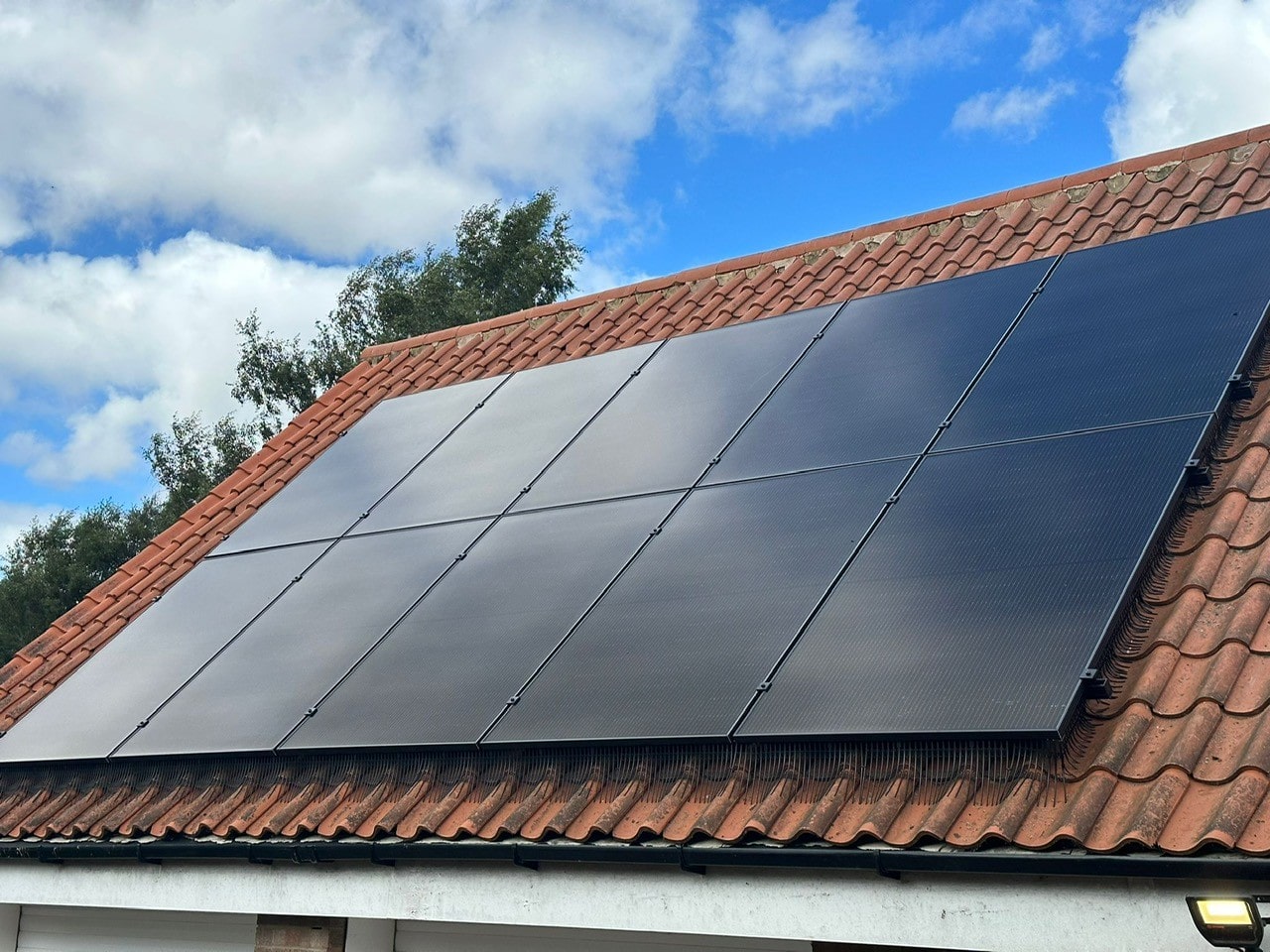A common question we often hear is ‘How many solar panels can fit on my roof?’ It’s an important factor to consider when thinking about installing a solar system for your home or business.
Every roof is different, down to the size, shape, orientation and even the amount of shading. All of these aspects can affect how many panels will fit on your roof – and how efficient they will be.
That’s why we’ve put together this guide to give you everything you need to know to determine the best number of panels you need for your specific roof.
How to Calculate the Number of Solar Panels for Your Roof
If you’re wondering how many solar panels can fit on your roof, there’s no need to climb up and measure it yourself. Please don’t risk your safety, as this can be dangerous and unnecessary.
At Lincs Renewables, we use advanced satellite imaging and digital mapping tools to accurately assess your roof’s size, shape, and orientation. This allows us to calculate how many solar panels your property can accommodate, all without you ever needing to make a single measurement.
As part of our free, no-obligation survey, we’ll carry out a full digital roof assessment – including shade analysis, usable roof space, and panel layout – to design a system that is perfect for your home or business.
Leave the measuring to us and get in touch through our contact form to book a free survey.
What is the Maximum Number of Solar Panels Allowed in the UK
Fortunately, there is no limit to the number of solar panels you can have, but there is a limit on how many solar panels can fit on your available space. Always ensure that the structure of your roof can support the weight of your panels before thinking about adding as many as possible.
Factors to Consider
- Roof size and shape
The amount of roof area is one of the most important factors when considering how many solar panels you can fit on your roof’s total usable surface area. Solar panels typically measure about 1.76m x 1.13m. By measuring the length and width of your roof, you can get a rough estimate of how many panels can fit.
When it comes to roof shape, flat roofs are generally easier to install panels on, while pitched or irregular roofs may require a more strategic placement.
- Roof orientation and tilt
Orientation can play a crucial role in determining the number of solar panels for your system. South-facing roofs are ideal for capturing the most sunlight in the UK. However, east or west-facing roofs can still work efficiently; placing them on a north-facing roof may require more panels to achieve the same output.
The angle of your roof can also impact panel performance. A tilt of around 30-40 degrees is the ideal tilt for solar panels in the UK. However, you can still achieve the right angle with adjustable mounting systems.
- Roof obstructions
A lot of roofs already have obstructions such as chimneys, vents, skylights and air conditioning units, which can reduce the available space for solar panels. If parts of your roof are shaded for most of the day, this will affect the efficiency of your panels. Choosing areas on your roof with minimal obstructions can help to create effective power efficiency. An experienced solar installer can help you design a layout that makes the most of your roof space while avoiding obstructions. At Lincs Renewables, our expert solar fitters offer bespoke designs to suit the available space on your property.
How Much Roof Space is Needed for Solar Panels
There is no specific size needed for your solar system to be installed on your property. But, as a general guideline, a typical domestic solar system may need 25-35 square meters of clear roof area.
The most important factors influencing the exact space needed include the size of the panels, the power output required, and the roof’s layout, which must be able to accommodate the panels while avoiding obstructions.
Building Regulations
When thinking about how many solar panels you can fit on your roof, it’s important to be aware of any potential local regulations or building codes. Here in the UK, there are guidelines regarding panel installation for residential and commercial buildings.
When it comes to planning permissions, most residential solar installations fall under permitted development rights, meaning you don’t need planning permission to install them. However, larger installations or listed buildings may require special permissions.
Final Thoughts
From roof size to shape, orientation, tilt and potential obstructions, there are several factors to consider when deciding on how many solar panels can fit on your roof. Taking the time to evaluate these elements ensures your system is efficient, safe and tailored to your property.
At Lincs Renewables, we provide bespoke solar designs to make the most of your roof space and optimise energy output.
For more information, call us on 01472 511487, email us at info@lincsrenewables.co.uk or contact us here.
Our team of MCS approved solar panel installers cover the following areas and more across Lincolnshire and East Yorkshire:
- Boston
- Caistor
- Cleethorpes
- Gainsborough
- Grantham
- Grimsby
- Horncastle
- Hull
- Lincoln
- Louth
- Market Rasen
- Newark




